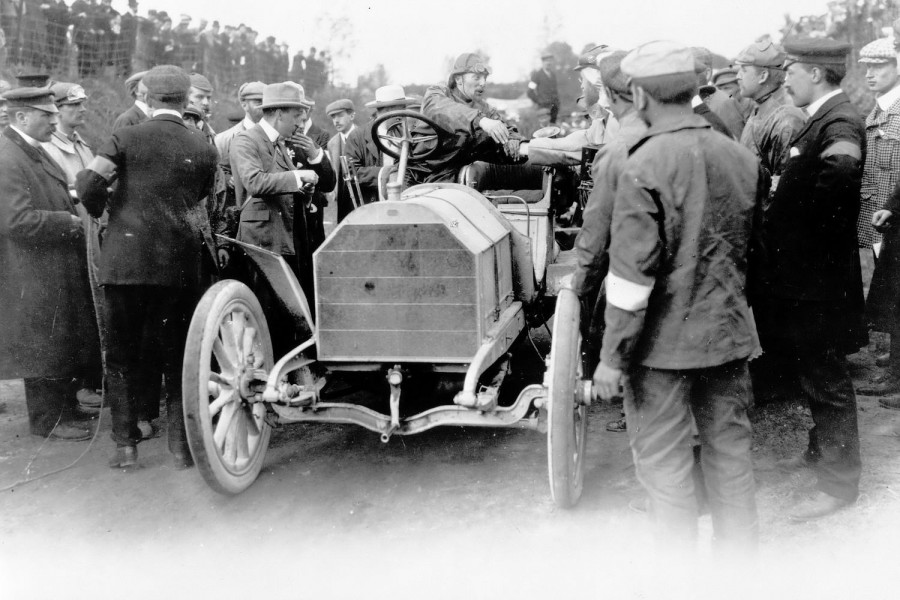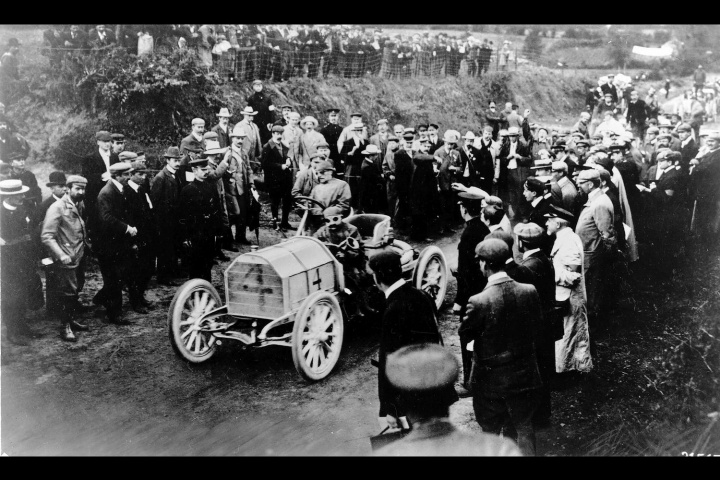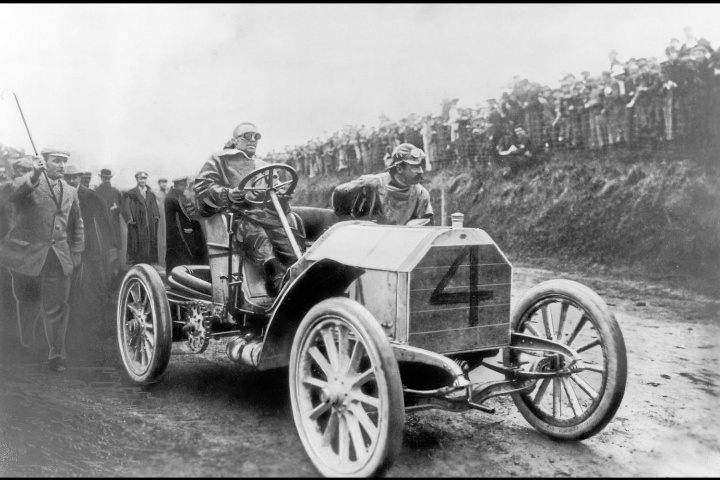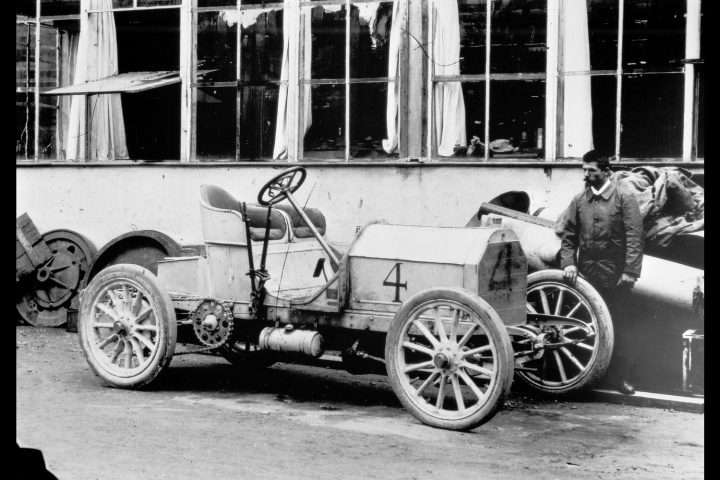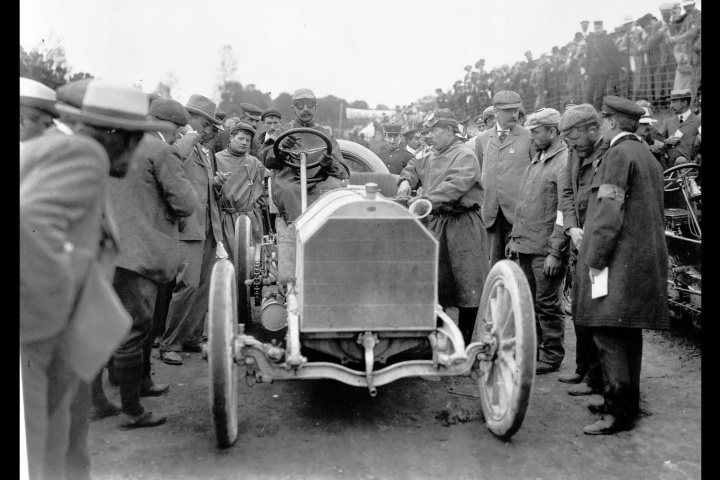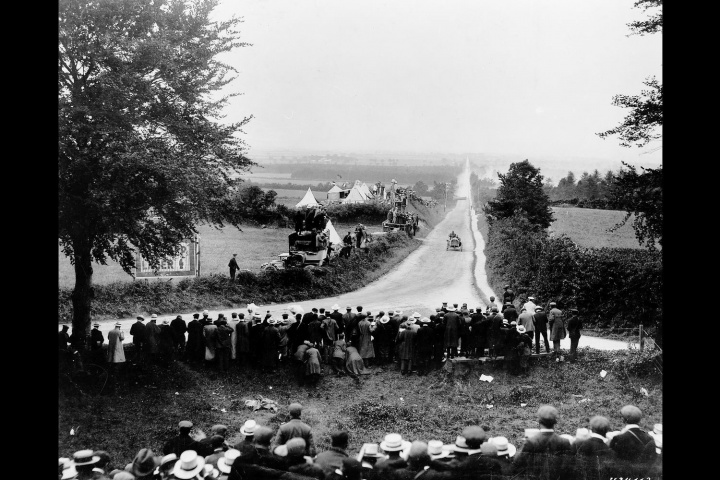What's the news?
Care to hazard a guess at what the most-attended sporting event in Irish history might be? An All-Ireland final, surely? Maybe a major World Cup qualifier?
Nope, in fact it was the Gordon Bennett Cup Grand Prix of 1903. Even now, 116 years on, this epochal car race drew the largest sporting crowd in Irish history, with an estimated 150,000 people turning out for the event, some of them seeing a car for the very first time.
This year, as is tradition, some of the most spectacular classic, vintage and veteran cars in Ireland will take part in a commemoration run to mark the anniversary of the event. According to the organisers, "This year's launch of the Gordon Bennett Irish Classic Car Run was held at the Garda Headquarters in the Phoenix Park, where it was attended by representatives of the Road Safety Authority and An Garda Síochána. This event has an unblemished road safety record, linking it to the safety record of the 1903 race, "the race that saved motor sport." This record set the 1903 race apart from the other early-stage races, whose hosts ran them on open roads resulting in multiple fatalities."
They're not kidding. Earlier in 1903, the Paris-to-Madrid road race, so typical of the vast, staggeringly unsafe city-to-city races that were a staple of early motorsport, was stopped when the competitors reached Bordeaux, with reports of spectators and competitors being killed, including Marcel Renault himself.
For the Gordon Bennett race, then, things had to change. The son of a New York media baron, James Gordon Bennett was a flamboyant character whose love of sport and all-round derring-do was reflected in the six annual, white-knuckle car races that bore his name. Born into the upper echelons of New York society, Bennett loved nothing more than a crazy wager or a madcap dash to settle a score. His name, though, would become synonymous with a race more famed for its safety than anything madcap.
Given the resistance to racing cars on open roads in England itself, with it being the UK's turn to run the race, an act of parliament was passed to allow a loop of roads in County Kildare (then called Queen's County, but maybe let's not go there, eh?) to be closed, turning it into the first closed-loop racing circuit ever used. Some 7,000 policemen were drafted in to control the crowds, and to try and stop people wandering into the road as a racing car approached.
The British Napier team was the pre-event favourite, having won the 1902 race (hence why the 1903 event was being run in the UK), but the French Panhard-Et-Levassor team was also reckoned to be fast. Young, upstart Mercedes-Benz (imagine that...) was also in the mix, but seemed to be out of the event before it started, when a fire at the factory destroyed the firm's new 90hp racers. Only when a whip-round among its wealthy customers turned up enough spare chassis and cars could Mercedes field a hastily cobbled-together entry.
Mercedes' trump card, though, was Camille Jenatzy. The Belgian driver was already a Land Speed Record holder, and was the first person to travel at more than 100km/h. His driving style included some of the first exploiting of what we'd come to know as a four-wheel drift, yet in pre-event terms it was reckoned that this power-sliding style would count against him on the tight, dusty Kildare course.
In the event, Jenatzy was magnificent. Think of him as perhaps a prototype Gilles Villeneuve - driving in a style that one might call a controlled explosion; blisteringly fast, always on the outer edges of that control, but always equally in command of his car. Despite being visually dramatic, the flame-haired (and bearded) Jenatzy must have had remarkable mechanical sympathy too; his Mercedes was the only one not to break its rear axle.
While the French won the team's cup (being the only squad to get all its cars to the finish of the more than 500km race) Jenatzy's Mercedes - a car borrowed from a customer, and unfancied to win the event - was in front. It was Mercedes' first ever Grand Prix victory, kicking off a legacy that continues to this day.
There were other significances to the 1903 Gordon Bennett. That act of parliament meant that Ireland could, and still can, close off public roads for motor racing events, which is why we still have such a vibrant tarmac rallying scene today. The Napier team painted its cars in a dark 'Shamrock' green, as a tribute to the event being held in Ireland, and it is that colour that has become, in the years since, British Racing Green. The event even had a brush with literature - none other than James Joyce wrote a report of spectating at the race.
Above and beyond all of that, though, the 1903 Gordon Bennett essentially created modern motorsport as we know it. Racers taking multiple laps of a closed course, where the viewing public is controlled and kept back for their safety. It was possibly the first motor racing event ever were no-one - no competitor nor spectator - was killed as a result of the race and for that reason alone, if for no other, deserves to be commemorated.

